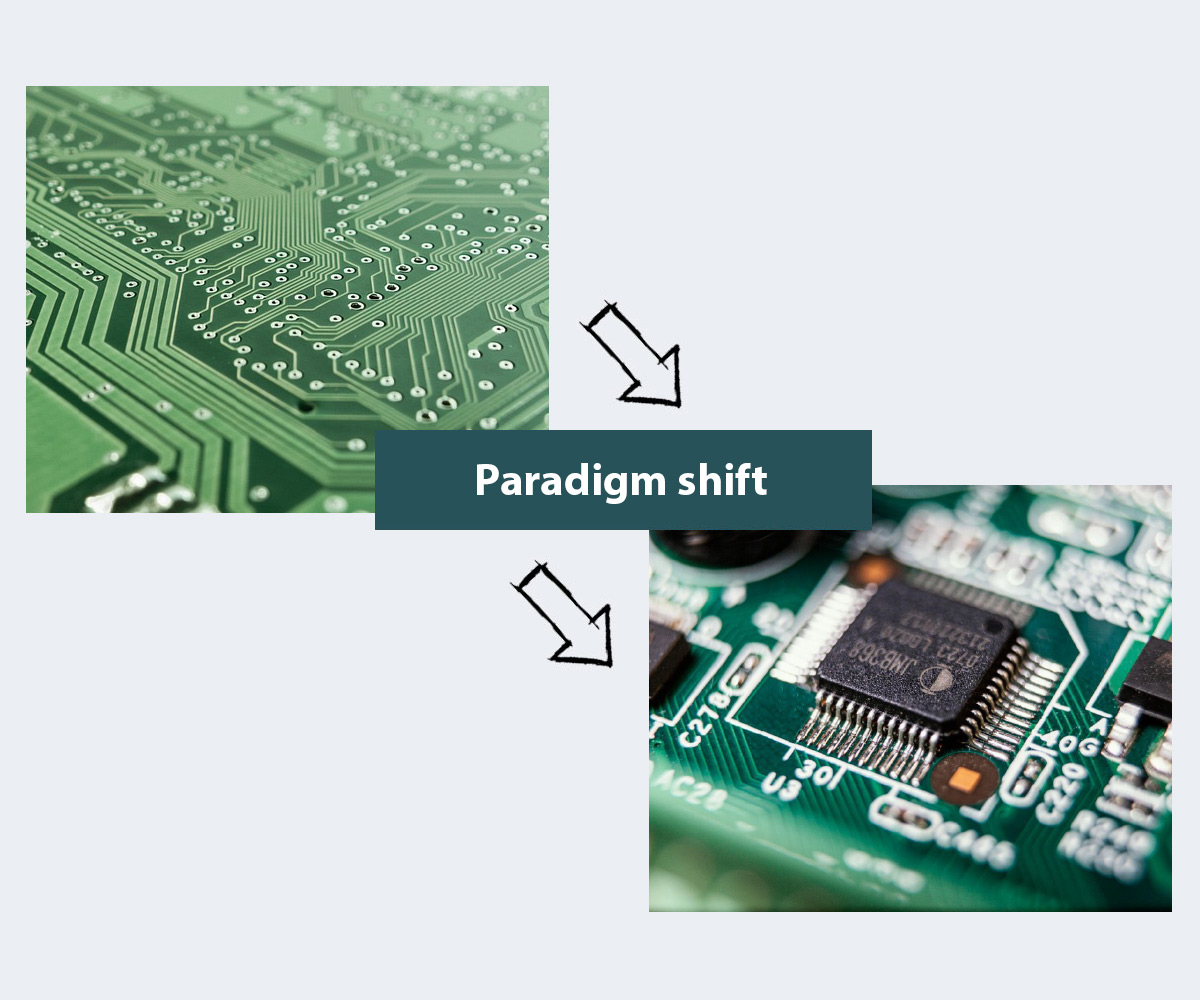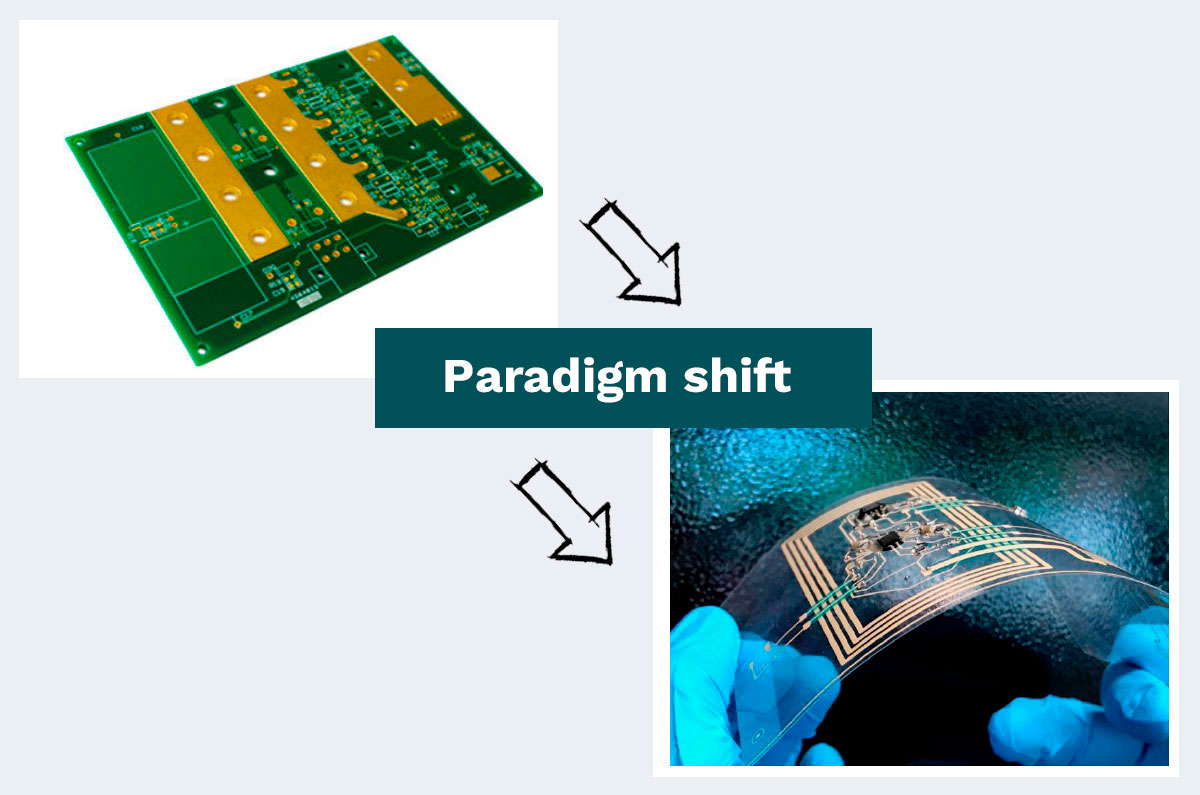Rigid or conventional circuits
We design, manufacture and assemble electronic circuits using THT and SMT processes with automated soldering by reflow or wave oven.
Our electronics department can design a circuit according to the needs of the client/project, or adapt it to make it more functional, economical or have a size that suits the needs of the product or its industrialization.
Our circuits can be adapted to any sector, type of device, equipment or machine. We also carry out certain soldering or component placement manually, if the product requires it.
We carry out the optical inspection in an automated way, controlling 100% of the manufactured circuits.
Applications:
![]() Manufacturing of electronic circuits: We carry out both the design and production of circuits using THT and SMD techniques.
Manufacturing of electronic circuits: We carry out both the design and production of circuits using THT and SMD techniques.
![]() Our electronics department can develop a circuit according to the needs of the client/project or adapt it to make it more functional, economical or have a size according to the need of the product or its industrialization.
Our electronics department can develop a circuit according to the needs of the client/project or adapt it to make it more functional, economical or have a size according to the need of the product or its industrialization.
![]() The circuits we manufacture are applicable to any sector and type of device, equipment or machine.
The circuits we manufacture are applicable to any sector and type of device, equipment or machine.
![]() We also carry out certain soldering or component placement by hand, if the product requires it.
We also carry out certain soldering or component placement by hand, if the product requires it.
![]() Verification is automated, with 100% of the circuits we manufacture being controlled.
Verification is automated, with 100% of the circuits we manufacture being controlled.

Flexible Printed Circuit Boards (FPCB)
Flexible circuits represent a paradigm shift: from a rigid circuit to a malleable one. A thin, easy-to-integrate type of circuit that can cover large areas and be mass-produced.
It has the built-in functionality of combining different devices on a single production substrate. And it offers new market opportunities thanks to its greater freedom of shape and size.

We have developed together with Eurecat the soldering of components in flexible circuits
Printed electronics is a technology that makes it possible to print electrical connections (tracks) directly on different substrates (plastic (PC, PET…), paper or textiles) electronic components, conductive tracks and circuits. In this way:
![]() The flexibility of the substrates makes it possible to physically adapt the circuit and place it in areas that are not flat on the final part.
The flexibility of the substrates makes it possible to physically adapt the circuit and place it in areas that are not flat on the final part.
![]() The flexible circuits can be used in In Mold Electronics (IME) processes, so that by thermoforming they can be shaped and injected with the resin that will form the final object, with the flexible electronic circuit being completely integrated into the final part.
The flexible circuits can be used in In Mold Electronics (IME) processes, so that by thermoforming they can be shaped and injected with the resin that will form the final object, with the flexible electronic circuit being completely integrated into the final part.
The manufacturing process of our flexible circuits is:
![]() We select the right substrate
We select the right substrate
![]() We print the tracks and some components using conductive or dielectric ink.
We print the tracks and some components using conductive or dielectric ink.
![]() In the case of hybrid technology, conductive adhesive is deposited to create an electrical connection between the leads and the SMD components
In the case of hybrid technology, conductive adhesive is deposited to create an electrical connection between the leads and the SMD components
SMD components are placed using pick&place
![]() The adhesive dots that will electrically bond the SMD components are heat cured
The adhesive dots that will electrically bond the SMD components are heat cured
![]() Structural glue is deposited to improve the mechanical bonding of the component to the circuit
Structural glue is deposited to improve the mechanical bonding of the component to the circuit![]() The structural adhesive is then thermally or UV cured
The structural adhesive is then thermally or UV cured
![]() At this point, the FPCBA is ready for further processes such as thermoforming, injection moulding which can give it non-flat shapes or for use in flexible textile wearables
At this point, the FPCBA is ready for further processes such as thermoforming, injection moulding which can give it non-flat shapes or for use in flexible textile wearables

Applications
Flexible circuits have a multitude of applications in today’s markets:
Printed electronics in important industrial sectors
![]() Monitoring for preventive care
Monitoring for preventive care
![]() Wellness and health purposes
Wellness and health purposes
![]() Biosensors
Biosensors
![]() OLED for light therapy
OLED for light therapy
![]() Smart ampoules
Smart ampoules
![]() Displays as decorative applications
Displays as decorative applications
![]() OLED luminaires
OLED luminaires
![]() Detection and signaling for household appliances
Detection and signaling for household appliances
![]() Tactile and functional surfaces
Tactile and functional surfaces
![]() Low cost and consumption displays for price tags
Low cost and consumption displays for price tags
![]() Smart tickets and labels
Smart tickets and labels
![]() Smart packaging combining sensor systems
Smart packaging combining sensor systems
![]() Energy collection and storage
Energy collection and storage
![]() Printed and hybrid NFC and RFID tags
Printed and hybrid NFC and RFID tags
Gadgets
![]() NFC, RFID antennas
NFC, RFID antennas
![]() Geolocation, GPS (hybrid electronics)
Geolocation, GPS (hybrid electronics)
![]() Motion monitoring
Motion monitoring
![]() Printed light
Printed light
![]() ECG, respiration, temperature monitoring
ECG, respiration, temperature monitoring

